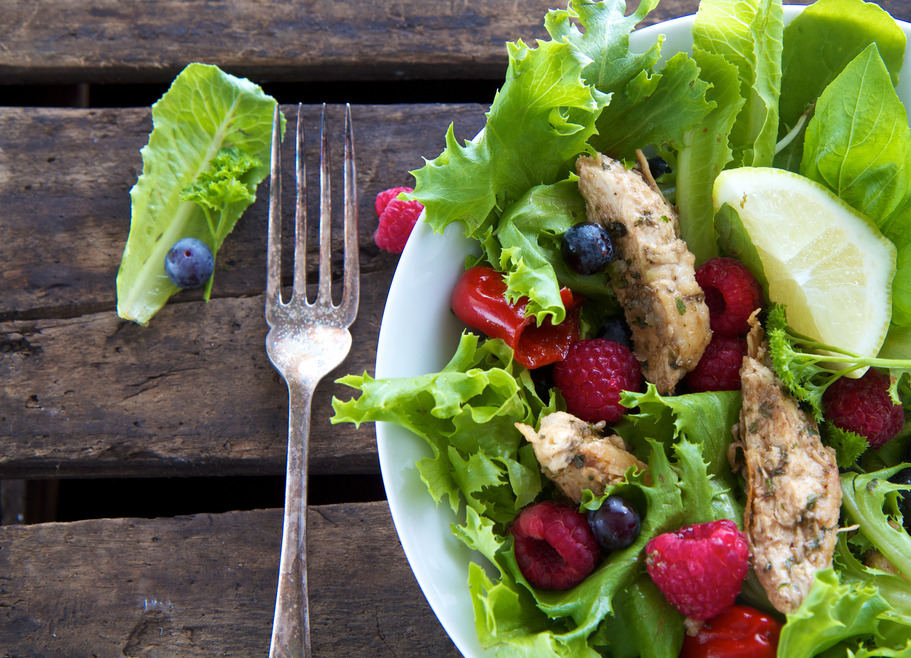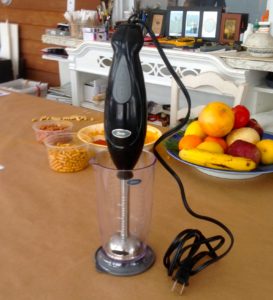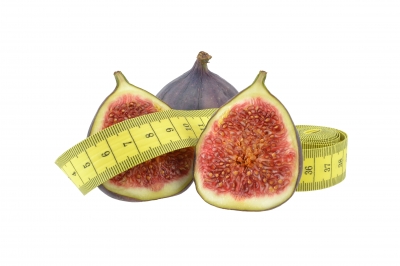It’s that time of year again, where we look back at trends for the year that was, and set a course for a happy and productive 2016. May yours be filled with good food, good friends and family, and good work.
Here are a few of the food-related trends I see in the natural nutrition world:
- Authentically whole Many Americans think that frozen meals, take-out meals and packaged smoothies are whole foods. They may be made from whole foods, they may be made from high-quality ingredients, but if it’s packaged (no matter how pricey the package is), it’s processed. Not all processed food is bad, and we can eat some and still be vibrantly healthy. Just remember, it’s the whole produce you find at your farmer’s market and the produce isle that is the center of nutritional wellness.
- Post-paleo ancestral eating I have truly enjoyed the enthusiastic discussion about just what paleolithic man really ate. We know he didn’t have bacon (poor paleo man). Nor paleo power bars. Nor did he use those little rubber toe-shoes. But the inquiry at the root of the debate – just what is the genetic imperative for humans when it comes to food – is a true and fascinating one. For most of us, following a whole-foods, plant-based diet that contains clean protein and healthful fats, as in the Mediterranean and other ancestral diets, will do the trick.
- Beans on the rise…again Plant-based protein is finally getting its due. We are finally also getting the idea of quality, as well, since another trend is continued growing interest in GMO-free eating and labeling. Non-organic soy is now predominantly GMO, unfortunately. But, increasing the beans in your diet will bolster fiber and is in better balance with the earth. If beans give you excess gas, choose smaller varieties like lentils.
- Eat fish…consciously Fish and shellfish are the riches sources of anti-inflammatory omega-3 fats, and figure prominently in patterns of eating shown to be most healthful. Yet, the oceans are not getting cleaner, and over the past decades, fishes considered high in mercury and PCBs have steadily grown. This is a great year to sample your first sardine, or herring, or anchovies. These small fishes tend to be lowest in contaminants.
- Holistic cannibus As most states approve medical marijuana, and many states eliminate all penalties for having or smoking pot, get ready to learn more about THC to CBD ratios, and what various strains of marijuana can do for various ailments.
- Mindful eating 2.0 McMindfulness. Yep, it’s the new black. Now we just need to learn what it is. Mindfulness is a form of meditation, so when the lunch line suggests the mindful choice of the day is turkey burger, just sigh. Nonetheless, as more people practice the meditation of eating more often, all of our relationship with food and with the planet will improve. One breath, one bite at a time.
Here are a couple other good trend pieces from around the web:
Restaurant trends
2015’s big moments for the natural food industry
Happy New Year! May yours be the best one yet.
Annie

For me and many of those I serve, weight management is nothing less than a spiritual path to wholeness. Do I get sick of having to manage my weight? Absolutely. Do I wish that there would be a time when I didn’t have to think about it? Are there days when it’s the last thing I want to think (or write or teach!) about? Yep.
That’s the thing about spiritual paths. It’s not fun and games all (or even most) of the time. The ecstasy is fun and with practice comes more easily, and I know that my weight fatigue is a necessary part of the ecstasy I’ll be feeling tomorrow.
Feeling really sick of my spiritual path is an indicator. It usually means that I need to look at my path in a new light or from a different angle. It’s tempting to give up, backslide, binge and give up. But no, this is my path, and feeling sick of it is on the path.
I also start to look around for ways to be fantastic to myself while staying on (or near) my path. This is how I was taught. To be compassionate to myself, stay, and to get curious about the experience of what I am feeling. Hmmm…I wonder what that being sick of it is about – really? To stay with it and watch it rather than react.

For me it’s the combination of the smell of incense thick in the air, the swing of golden incense pots and the slow procession of men in white. I don’t go to Mass anymore, and am not Catholic for all the usual reasons. Nonetheless, one of many things that upbringing gave me was a love of and understanding of the importance of ritual in my life. From baptism to last rites, a Catholic knows the ceremonies and rituals that tie their lives to an ancestral thread.
The rise of secular culture and the “me generation” is marked by greater acceptance toward those different from ourselves (with notable holdouts), but also less drive to maintain the ritual containers provided by religious and cultural ceremony. The re-emergence of earth cultures, of indigenous shamanic ritual, is perhaps a seeking to re-ritualize our lives. We need to find a new set of rituals to connect us back to the earth, to our ancestors and to the mystery that lies at the heart of all life again.
Rituals are acts performed in a certain way to realize an intention. They are things that we do, often that our ancestors or others have done before for the same effect, often in ceremonial events. They can provide a thread of meaning to mark a transition or close a chapter, honor an aspect of life, or connect us to the mystery and miracle of life. Ceremony and ritual allow us to take a step back, pause time, and be in the miraculous web of our own lives here on earth.
Einstein said it well when thinking about the why: “The most beautiful thing we can experience is the mysterious,” he said. “It is the source of all true art and science. He to whom this emotion is a stranger, who can no longer stand rapt in awe, is as good as dead”. We need it to be fully us, and certainly to be our best selves.
Be it a morning ritual of lighting a candle and bowing to the 4 directions then above below and inside, or a morning or evening gratitude practice, plant bathing, or an elaborate ritual of gathering, clearing, and honoring a common intention (as we will do together at Yoga of Plants over the 4th of July weekend at Kripalu…still room left!), rituals capture time and remind us to feel the mystery.
Interested in learning more about ritual? Check out The Art of Ritual by Renee Beck and Sydney Barbara Metrick. It’s a clear, thoughtful and inspiring book. In my monthly newsletter, I often provide a step-by-step guide on a particular practice that can re-ritualize your life. That newsletter always provides ideas on leading a botanical natural weight lifestyle.
How to add meaning to life with ritual? Practice. All it takes is intention and practice.
What is your favorite ritual?
Enjoy the day. Summer in it’s fullness!

OK folks, it’s that time again. The Scientific Report for the Dietary Guidelines for Americans (DGA) is out, and it’s time for all nutritionists and foodie/activitists to dive in and weigh in. You have until early April to submit your comments.
Better process
While there is always the plus – minus of what each of us thinks the panel got right and wrong, I want to give a plug for the improvements in the process that have happened over the past decade. It’s much easier now to look behind the curtain of the recommendations and read and review the data upon which they are based. I like it! Every five years, this exercise helps me do an overview review of what the mainstream science says about food and nutrition. I encourage you, if you are interested, to check it out – at the very least, you will learn more about what the mainstream research actually says.
Evaluating evidence
One of the issues in diet debates today is that many of those with an opinion don’t actually know how to evaluate evidence or don’t take the time to. There is a whole lot of junk science, tiny studies and early data out there being used as consensus and the basis for diets. That’s part of the outrage over the DGA every time they come out – a misunderstanding of what the data actually says (and what the data actually is). The committee really does need to rely on the current state of high quality literature as the basis of their recommendations, and there have been some disasters in the past when they made recommendations that seemed to be true that were later proved false or incomplete. The betacarotene story is an example (the Institute of Medicine of the NIH set the recs high, then that level was found to increase cancer risk in smokers – oops).
The problem is that well-designed studies in major scientific centers are often funded by the food industries that benefit. And we all see that the whole truth of nutrition (and life) is that the fewer packages you buy, the better off you’ll be. So, the only science taking a good look at whole nutrition available to integrative dietitian nutritionists and other foodies is often in smaller studies sometimes not as well designed. Eventually, the whole truth will come out. Unfortunately, it will come out much more slowly than if we had a free unbiased system of scientific inquiry around food and nutrition. The full true story of human nutrition is not yet told by the Dietary Guidelines for Americans. In an imperfect world, it’s a start.
Weaving science & wisdom
Here’s how the DGA process influences my own food and eating philosophy.
I begin by knowing what the DGAs say and understanding the research basis for them. From there, I draw from scientific integrative models like functional nutrition, traditional wisdom systems like Western herbalism and Ayurveda, a healthy respect for human intuition (mine and my client’s) and an understanding that how and what we each eat has implications not only for our own bodies but for everything around us and the earth itself.
In the end, plants are the healers, eating clean whole high quality food made with love that honors who we are and the lives we lead will take most of us through our nutritional lives in balance. If you’re not in nutritional balance, a skilled integrative dietitian nutritionist can help you get there.
So much to talk about with the DGAs. Have you reviewed the data and recommendations? What do you think?
Detox seems to naturally set in this week. It feels great right now to eat greens, beans, nuts and seeds!
If you are shaking off the sugar bacchanal that set in around Halloween and crested in the Hana-Kwana-Christmas-to-New Year celebration (wasn’t that fun?!), here is one more warming, grounding soup to help you remember how it feels to be simply nourished by food again.
This soup features winter root vegetables: sweet yellow turnips and carrots, along with onions and white beans. It’s a terrific sweet-rooty canvas that you can finish with a variety of herb-spice flavor combinations. I chose black pepper, celery seed, saffron and turmeric for this one.
For this recipe I used a combination of slow techniques (soaking and cooking dry beans) and short-cuts (a commercial “better-than” chicken stock). I find joy in cooking from scratch on a Sunday as I think, write, hang out and virtually-visit friends and family by phone and yep, Facebook. While making stock is yet another wonderful use of time, I am also a firm believer in the “better-than” concept of doing the best you can and not worrying too much about achieving from-scratch perfection. So, the stock I used has a little cane sugar in it, an ingredient that never would have occurred to me to add to my own stock, but the soup is still a celebration of plant-rich goodness. I also used an immersion blender, an inexpensive new tool in my kitchen that makes blended vegetable soups a breeze. You can use a regular blender to get a smooth consistency, but this soup would still be tasty if mashed by hand or not blended at all.

My immersion blender was a great $30 investment.
Ingredients
10 oz dry white beans (I used organic navy beans)
2″x4″ piece dry konzu (seaweed)
water
1 qt vegetable or chicken stock (I used Pacific brand free-range chicken broth)
1 medium yellow onion, diced
2 Tbsp olive oil
1 medium yellow turnip, peeled and cubed
5 medium carrots, washed and sliced
1 tsp celery seed
1 tsp ground black pepper
1 tsp turmeric
a few dry saffron threads
Directions
The night before soup day, rinse beans, and place in a medium-sized pot with konzu, then cover with water. Leave beans to soak overnight. Strain off the soaking water.
In a large soup pot over medium heat, begin with olive oil and onions. Saute until the onions are soft. Add beans, carrots, turnip, and stock along with several cups of water to cover, and simmer over low heat until the root vegetables and the beans are soft, about 45 minutes.
For a blended soup, get that immersion blender buzzing. Alternatively, use a blender for a portion or the soup or leave it unblended. Add spices, reserving a few saffron threads, and simmer for another 20 minutes (or, if you’ve learned how to “bloom” your spices from someone like Jeremy at Kripalu, go to it!), top each bowl with saffron threads and serve warm.

It’s been a big year for the science of integrative modalities this year. So, yours truly has been sharing scientific studies with my yoga teacher colleagues at Kripalu – they say “Wow!” and “Awesome.”
What’s old is new again (am I getting old or is this a repeating theme in life)? My teacher says life is a spiral and I continue to see the evidence that she’s right. I have so much enjoyed learning the ancient science of Ayurveda, and how my brilliant colleagues are applying that beautiful nature-based system to modern health care.
Here are the top trends, the memes I see on the rise:
1. Epigenetic
The yogis and yoginis are feeling prescient when we see the smattering of studies on yoga, meditation, mindfulness and that, in small studies, these modalities appear to change gene expression. Quickly. Impressively. Check it out.
Meditation changes gene expression.
2. Ayurveda
We’re at the beginning of a upward curve in the popularity of Ayurveda, and we’ll be hearing more about it as this system is viewed through a modern lens. The bookshelf of Ayurveda is exploding and we’re finding our intellectual leaders busy busy busy. Friend and colleague Hilary Garivaltis is traveling the country setting up Aurveda schools for yoga centers, and attendance at Kripalu’s really wonderful School of Ayurveda has more than doubled in the past couple years. Come to Kripalu and learn about this ancient traditional system that was the original integrative medicine.
Kripalu School of Ayurveda
3. Integration
The body knows. The body remembers. Can’t say it any more simply than that. Our bodies are the record of our lives (including our ancestors). All of what we do, think and believe is woven into the soft tissue of our fascia. If we spend our lives thinking we are not good enough (and I think this has somewhere somehow been programmed into us…Tom Kenyon says our creator did it!) in the end we in fact are not. Bummer! Yet the same person can focus on appreciating who they get to be, and a whole other body, whole other “resting face” are created. There are times when I’ve been rolling in the angst, when I can feel a tightness in my face as a drift off to sleep. That’s an indicator! I can soften and open as I age, or get bitter, brittle and hard. It’s not up to anyone else but me.
To learn what your body knows, do any body-mind practice regularly. Show up for it every day, or very nearly every day. It is showing up for yourself. My recommendation is predictable – come to Kripalu. For almost any program – follow what pings for you.
4. Herbs and Botanicals
Our ancestors, and not too too many generations back, had a wide array of botanical wisdom at their fingertips. We’ve outsourced that to our local pharmacy. But if you look around, people in every corner of the country are foraging, taking herb walks with the local herbalists, and checking out the botanicals in their own back yard. Please don’t wait to get a degree, but use your senses and good sense and a editable plant guide to find your way to better health. (Do be aware of the plants in your region that can, as my teacher says, heal you dead).
Get herbal and learn about learning more at Mountain Rose Herbal. OR study with Pam Montgomery or my friend Brittany at Thyme Herbal in Northampton, MA.
5. Eating for a Better Planet
How does the Atkn diet square with the fact that many environmentalists say we are past the global tipping point? Isn’t the meat-based version of Paleo in that same sink-the-earth boat? From Eco-Atkins to grass-fed local to values vegan, the choices we make about what we eat impact more than ourselves. There is more opportunity than ever to be a food activist – beginning at your own table.
Sustainable table is one place to start.
What are your top trends in nutrition now? Fascinated to hear!







